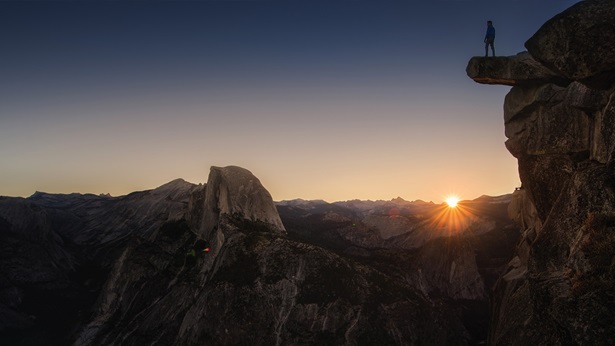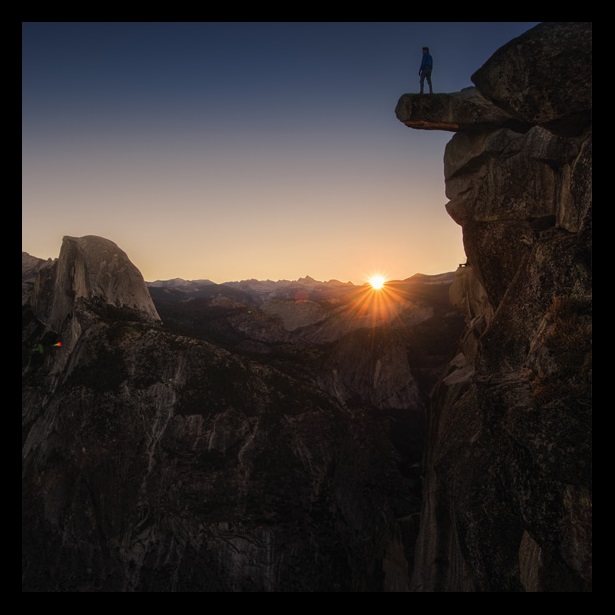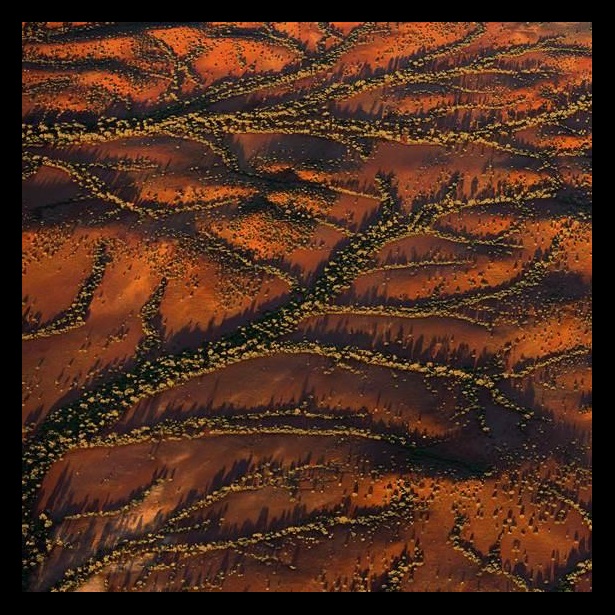Private Lands Are the Next Battleground in State Conservation Policy
Stateline

Since last year, staff members at the Land Trust of Virginia have fielded phone call after phone call from landowners seeking to set aside their property for conservation.
“We’re getting calls like crazy,” said Sally Price, executive director of the nonprofit, which works with private landowners to preserve farms and natural landscapes. “We’re doubling our staff for easement intake because we’re getting so many calls.”
The land trust expects to complete as many as 30 conservation easements this year, double the number it sees in a typical year, and it’s recorded a fourfold increase in inquiries.
The Virginia group is one of many conservation land trusts that have seen a spike in interest over the past few years. More than 1,000 such groups operate across the country, seeking to save land from development by acquiring it or negotiating conservation easements with property owners to limit the use of the land.
Environmental groups and lawmakers are placing an increased focus on private lands in national conservation strategies. The “30x30” campaign—which has been adopted by the Biden administration—aims to conserve 30% of U.S. lands and waters by 2030, a goal that relies heavily on voluntary conservation efforts from private landowners.
But the growing interest in preserving privately held land has sparked a fierce debate between supporters who say such efforts guarantee environmental protections and critics who say they take away individual property rights.
A handful of states are considering expanding their conservation easement programs, which offer tax breaks to landowners in exchange for giving up development rights to their farms and natural lands. In many cases, those easements last in perpetuity, offering durable protection even when the property changes ownership.
“We’ve seen a greater emphasis on the value of private land conservation,” said Lori Faeth, senior government relations director with the Land Trust Alliance, a national group that convenes and advocates for local land trusts. “There’s a great opportunity for that to grow over the next several years.”
Lawmakers elsewhere have considered providing direct support for land trusts, giving them access to loans so they can acquire high-priority properties when they are for sale. Proponents say such efforts are critical to addressing the climate and biodiversity crises, and for maintaining clean water and air.
But other state leaders are attacking the easement model. Lawmakers in several states have pushed to give officials veto power over conservation easements or to require expiration dates for the agreements. They argue that the contracts block future generations from making their own decisions about the land.
“The landowner needs to have a little bit more say about what can be done,” said Steven McCleerey, a former Democratic state representative in South Dakota who put land into an easement in the 1990s. He sponsored legislation in 2016 that would have put a 100-year limit on such easements, and sponsored a bill in 2020 that would have allowed conservation easements to be modified after the death of the grantor. Both failed to advance.
“When you try and sell a piece of land that has a perpetual easement on it,” he said, “nobody wants it.”
Other opponents argue that public money should not be used to fund conservation on private land. They claim that efforts to protect natural spaces will cause housing shortages in fast-growing communities and limit tax revenues for local governments.
Both sides see the others’ efforts as something of a land grab. How states respond could determine the fate of tens of millions of acres.
The Land Trust Model
Land trust organizations, mostly nonprofits, have conserved 61 million acres across the country through a mix of easements, outright purchases, and transfers to state agencies, according to the Land Trust Alliance. That’s greater than the combined area of every national park in the United States. A quarter of that total has been added since 2010.
Roughly 40 million acres nationwide are protected by conservation easements, with about half of that under the stewardship of land trusts. Reaching the goals outlined in the 30x30 conservation plan would require another 440 million acres to come under protected status.
“The thing about land is we’re not creating any more of it,” said Meredith Hendricks, executive director of the Land Trust for Santa Barbara County. “It’s important to protect private land, because the pressure to develop in California is so high, these places will vanish if we don’t do something right now.”
The Santa Barbara group conserved more than 4,000 acres in 2021, a two-decade high, and it has added staff to handle the surge in interest.
Land trust leaders say their recent success likely stems from several factors—a boomlet of older residents conducting estate planning, many landowners struggling with the tax burden of family farms and ranches, a spike in outdoor recreation during the pandemic, and a growing appreciation for natural climate solutions.
Some lawmakers think states should be bolstering the work of local land trusts. Maryland state Delegate Eric Luedtke, a Democrat, proposed a bill this year to provide $10 million in revolving loans to land trusts in the state.
“Sometimes property comes on the market, but land trusts don’t have the capital on hand [to acquire it],” Luedtke said. “This is essentially a way to allow the trusts to quickly respond to market forces.”
Because Maryland has little public land, nonprofit trusts are essential for conserving natural spaces, Luedtke said. While the bill failed to make it out of committee this year, he expressed optimism that the proposal will gain more momentum next session, informed by details worked out during this year’s effort. He’s also supportive of state efforts to increase funding for conservation easements.
Further south, the North Florida Land Trust is seeking to scale up its conservation efforts from the nearly 28,000 acres it has protected. The group saw a record number of monetary donations and donors last year.
“Sea level rise is going to push our population inland, and that’s where our wildlife is,” said Jim McCarthy, the trust’s president. “There’s going to be increased pressure on development of those inland portions, and that’s what we’re trying to save.”
Conservation Easements
Because conservation easements typically lower the market value of the land, the federal government offers income tax breaks for property owners who put land into easement. Many states also offer property or income tax reductions. Proponents of easements say they allow farmers, ranchers, and other landowners to hold onto their land, even when development pressure sends property values skyrocketing.
“With land valuations being what they are, it’s getting more and more difficult for working farms and ranches to remain profitable,” said David Weinstein, western conservation finance director with The Trust for Public Land, a Washington, D.C.-based conservation nonprofit. “Private land conservation is seeing a boom because people are really concerned about land conversion from working lands into development.”
In Colorado, lawmakers passed a law in 2021 to increase tax credit incentives for conservation easements. Landowners now receive an income tax credit of 90% of the donated value of the easement, up to $5 million. Following the bill’s passage, the state has seen an uptick in landowners granting conservation easements, said Melissa Daruna, executive director of Keep It Colorado, a nonprofit coalition made up of land trusts and other conservation organizations.
“We knew that there was an opportunity to increase private land conservation and work with more landowners if we could make the numbers pencil out better,” she said. “We simply will not get to the climate goals we need without engaging in private land conservation, and it needs to be done in a way that’s voluntary and supportive.”
Florida lawmakers, meanwhile, earmarked $400 million in 2021 to preserve a statewide wildlife corridor. Most of the funding is expected to be used for conservation easements. State Senator Jason Brodeur, a Republican who sponsored the bill, said it will allow animals such as black bears and Florida panthers to access habitat and retain their genetic diversity. The bill passed unanimously.
“If you pave over that land, you don’t allow water to percolate down to recharge the aquifer,” Brodeur said. “We will run out of freshwater in Florida before we run out of land to sell people. At 22 million people, we’ve got to start being real mindful of where that tipping point is.”
But some other states see the growing interest in conservation easements as a threat. Nebraska Gov. Pete Ricketts, a Republican, supports a bill that would limit easements to 99 years and give local governments greater ability to reject such agreements.
“To me, a perpetual easement is a tool for taking away property rights from future generations,” said Republican state Senator Dave Murman, the bill’s sponsor, according to the Omaha World-Herald.
Conservation leaders counter that putting an expiration date on easements would fail to protect critical habitat and farms from ongoing development pressure. Neither Murman nor Ricketts responded to requests for comment.
Nebraska’s push follows a new law enacted in Montana in 2021 that gives the State Board of Land Commissioners authority to deny conservation easements. Former state Representative Kerry White, a Republican who sponsored a similar bill that was vetoed in 2019, said governments should have more say about which lands are set aside for conservation. The contracts, he said, can block public necessities such as housing, power lines, water and sewer pipes.
“When you restrict development, you increase the cost of infrastructure as you have to move around that property with a conservation easement in order for a piece of property on the other side of it to build homes,” he said. “If you want affordable housing, then you don’t want to create additional costs for infrastructure.”
Environmental leaders counter that the lands preserved for habitat and farming are far more likely to be targeted for expensive subdivisions or mansions.
“Affordable housing isn’t at odds with conservation,” Weinstein said.
McCleerey, the South Dakota Democrat who was defeated in the 2020 election, is running again in 2022, and says he will continue his push to limit conservation easements.
Although any changes likely would not apply retroactively to the easement on McCleerey’s property, he said he now regrets placing 52 acres into an agreement for wetland protection. The easement has blocked him from planting crops on the land or changing the landscape to improve hunting conditions.
“Why can’t it be 25 or 50 years, instead of perpetual, forever?” he said. “The next generation may have a different view of what they can do with that land.”
Alex Brown is a staff writer for Stateline.
This article was previously published on pewtrusts.org and appears in this issue of Trust Magazine.
National Homeownership Month


A Huge Boost for National Parks









